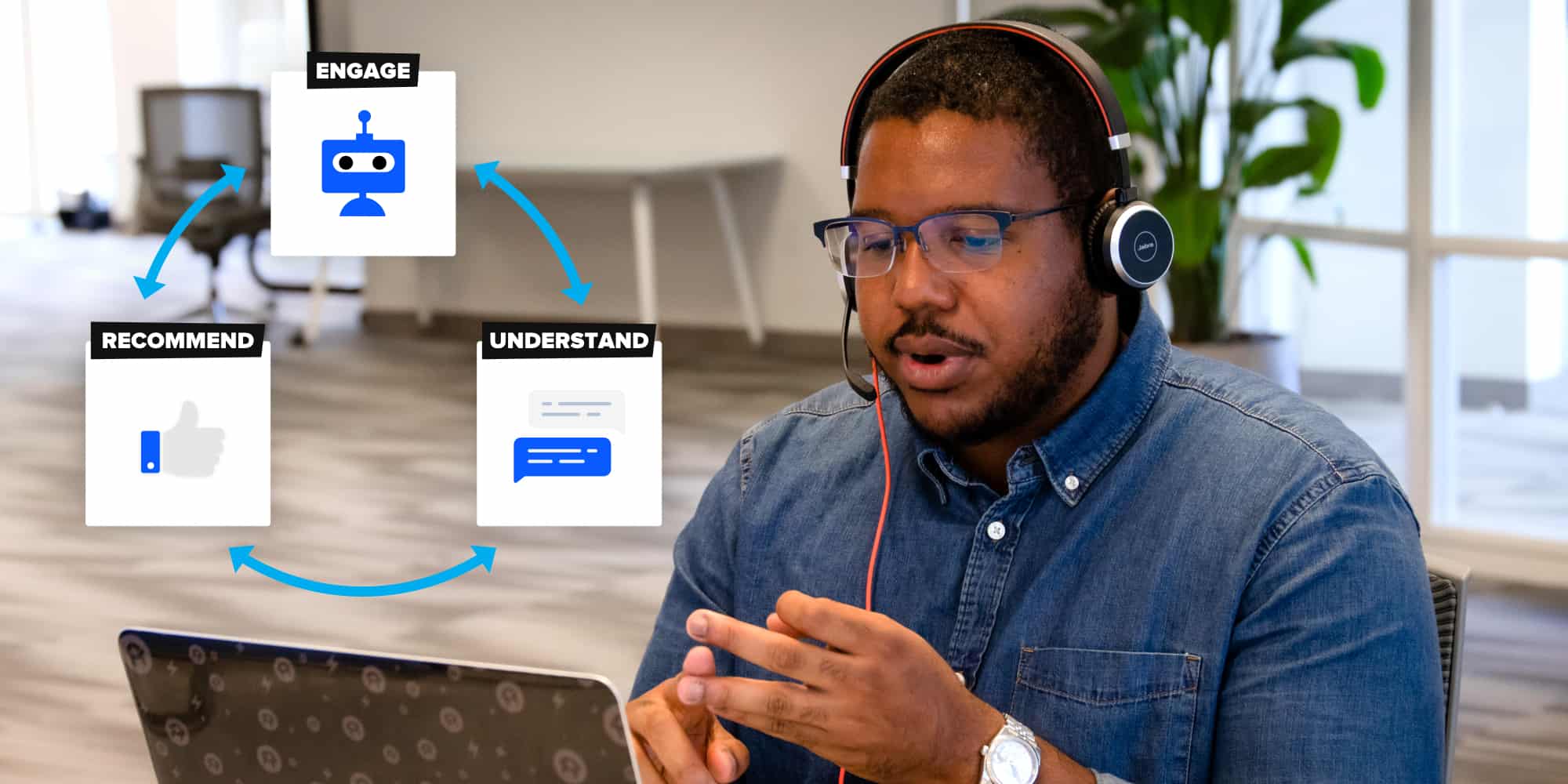
2020 is here, and I’ve got good news and bad news for you: you’re probably using an outdated sales strategy. Because if you’re still doing what worked in the last decade, then you’re basically handing the competition your lunch (and let’s be real, your commission).
Here’s why. Your customers can learn 80% of what they need to know about your product online before ever talking to you on the phone. They’re not as dependent on you for information, so customers care more about the experience you provide.
Netflix, Uber, and Zoom figured it out how to win in the 2010s?
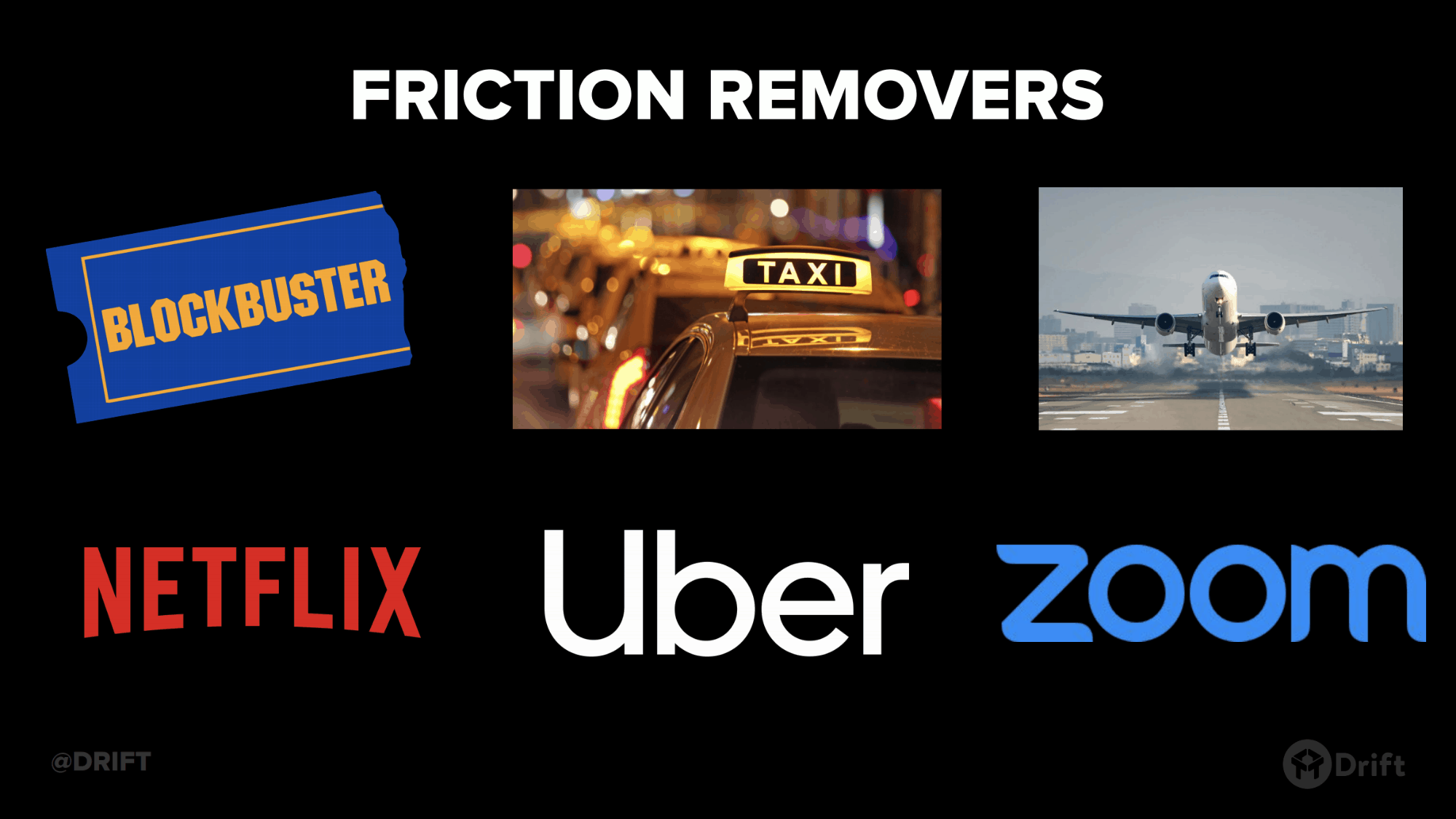
How did they do it? By creating a great customer experience that removes friction and makes their customers’ lives easier.
That’s not something only B2C companies can do. You can do it, too.
86% of B2B buyers are willing to pay more for a great customer experience, according to a recent PwC study. And 13% will pay more for additional features if the customer experience is high.
I sat down with my friends from Gong.io – Jameson Young (VP of Sales) and Devin Reed (Content Strategy Manager) – to talk through three innovative ways you can win more customers in 2020.
1. Modern sellers need great messaging to grab their attention.
As salespeople and marketers, we focus way too much on us. We tell prospects what we want them to know, not what the audience needs to know.
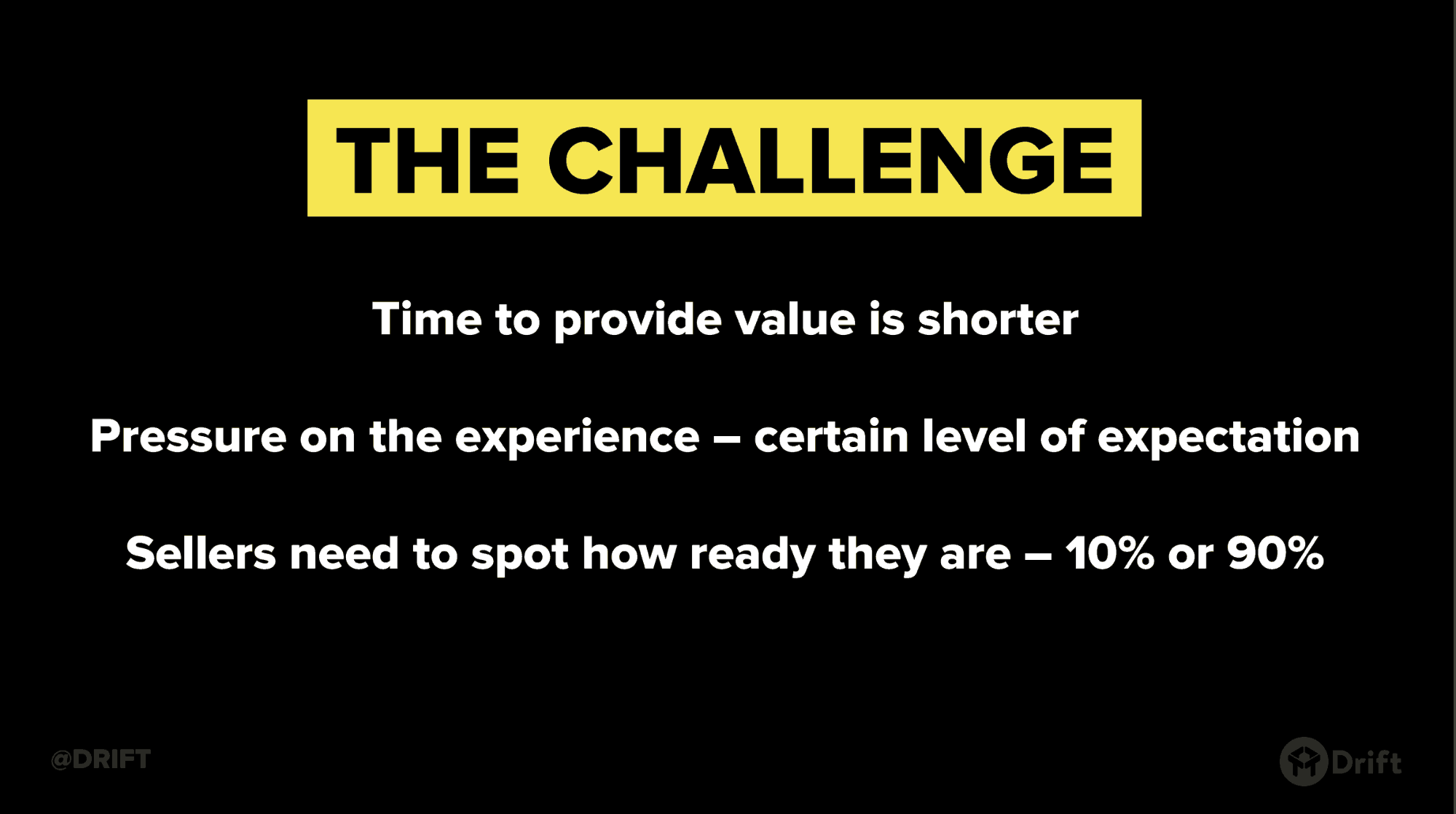
Guess what? Your prospects don’t actually want to hear about you and your product.
With so much information online, your prospects can come into that first call with any level of information – and it’s your job to connect the dots between what your product does and what they need. How can you help them?
Prospects expect that you can meet them where they are in the buying process. They expect you to tailor your message based on what they need, not based on a script. And they expect that you’ll give them what they need, because they have all the power.
To succeed in the next decade, optimize for the buyer, not for what’s easy for your business.
2. Make your pitch about the story, not about price.
The dirty secret about B2B buyers is that they probably don’t care as much about price as you’ve been led to believe. Where you’ll win is the story you tell and the experience you offer.
There are three ways to make sure you avoid a discount arms race:
Tell a narrative that’s bigger than features or benefits.
First, think for a second about your storytelling ability.
Are you starting with why, or are you jumping right into what your product does? Gong, for example, starts their story with the big questions every business tries to answer. Things like:
- How many of my deals are my competitors eating my lunch in?
- What are my best reps doing that everybody else isn’t?
- Why are some reps at 150% of their number, and some of them are at 40%?
The point isn’t the nitty-gritty details about what Gong can do. It’s about helping your prospect see the world through the lens of a new solution – your product. What questions do companies have that your product helps to answer?
Start with your best customers. Ask them why they bought from you in the first place. Figure out how they’re using your product and what value they get out of it. Chances are it’s not a brand new feature. It’s how you’re solving their pain point.
Latch on to the business pain.
The entire reason your prospect is seeking something different is because of a pain point they want to solve.
Offer a short, concise demo so your prospects can digest what you’re saying and champion your vision to the decision-maker in their company about why they need your particular product. When you talk 1:1, you can get hyper-specific on how your product can help their particular pain point.
One “secret” tactic we use at Drift is to ask our prospects, “What is the cost of doing nothing?” And then wait at least 15 seconds for that uncomfortable pause where they realize that they need your product.
Because if nothing changes, nothing changes.
There’s a reason someone’s interested in buying your product. You have to plant that seed in their mind that if they don’t purchase, they’ll never fix their problem.
Tell customer stories and use peer proof.
The best way to build credibility and trust with your prospects is to show that you’re part of their group. Start with a customer story – ideally a customer that’s similar to them. If they don’t identify with the customer example, they won’t trust you.
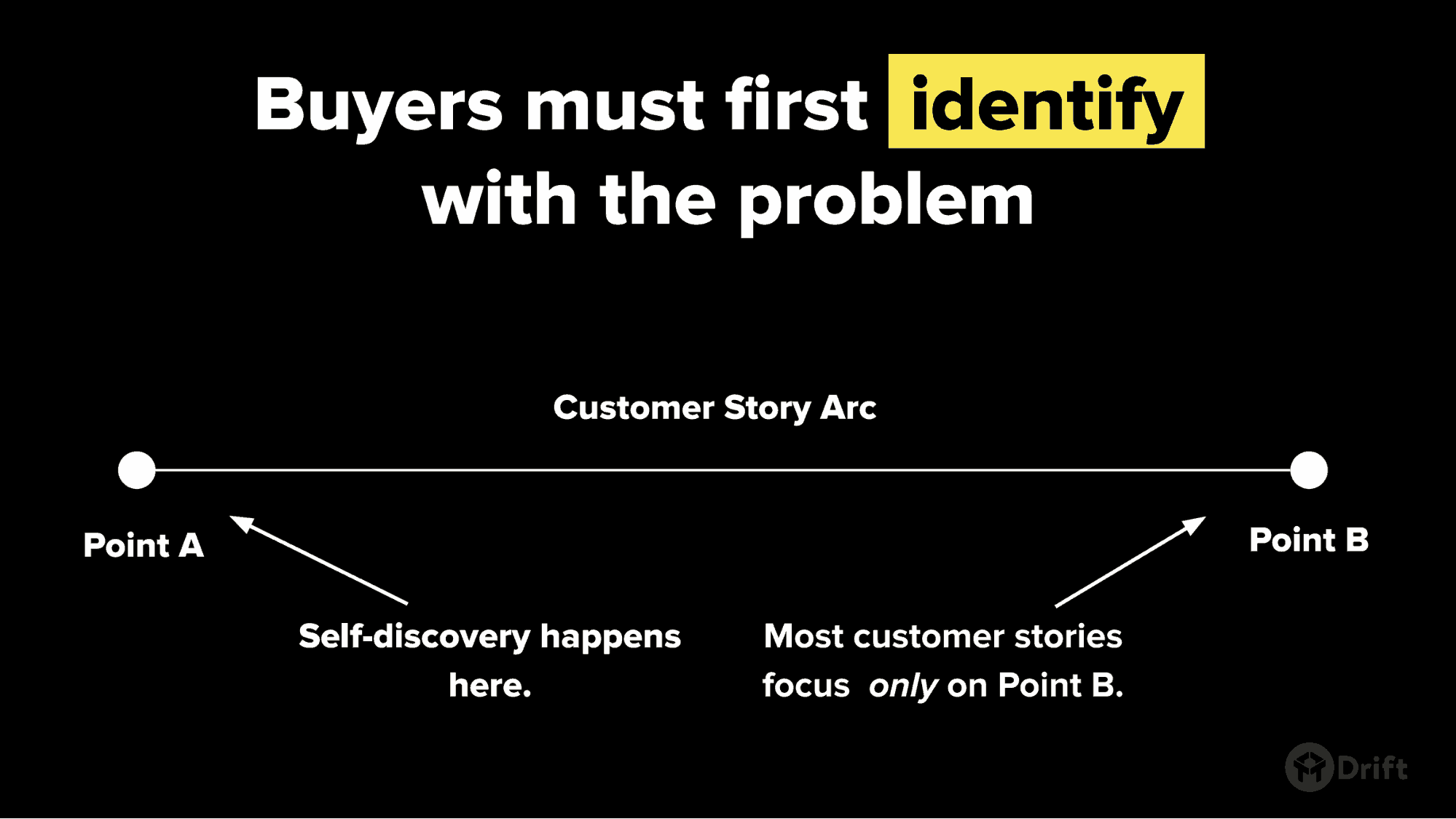
You need to choose the right customer story that resonates with them and helps them identify with the group of people who use your product. Otherwise your social proof will backfire.
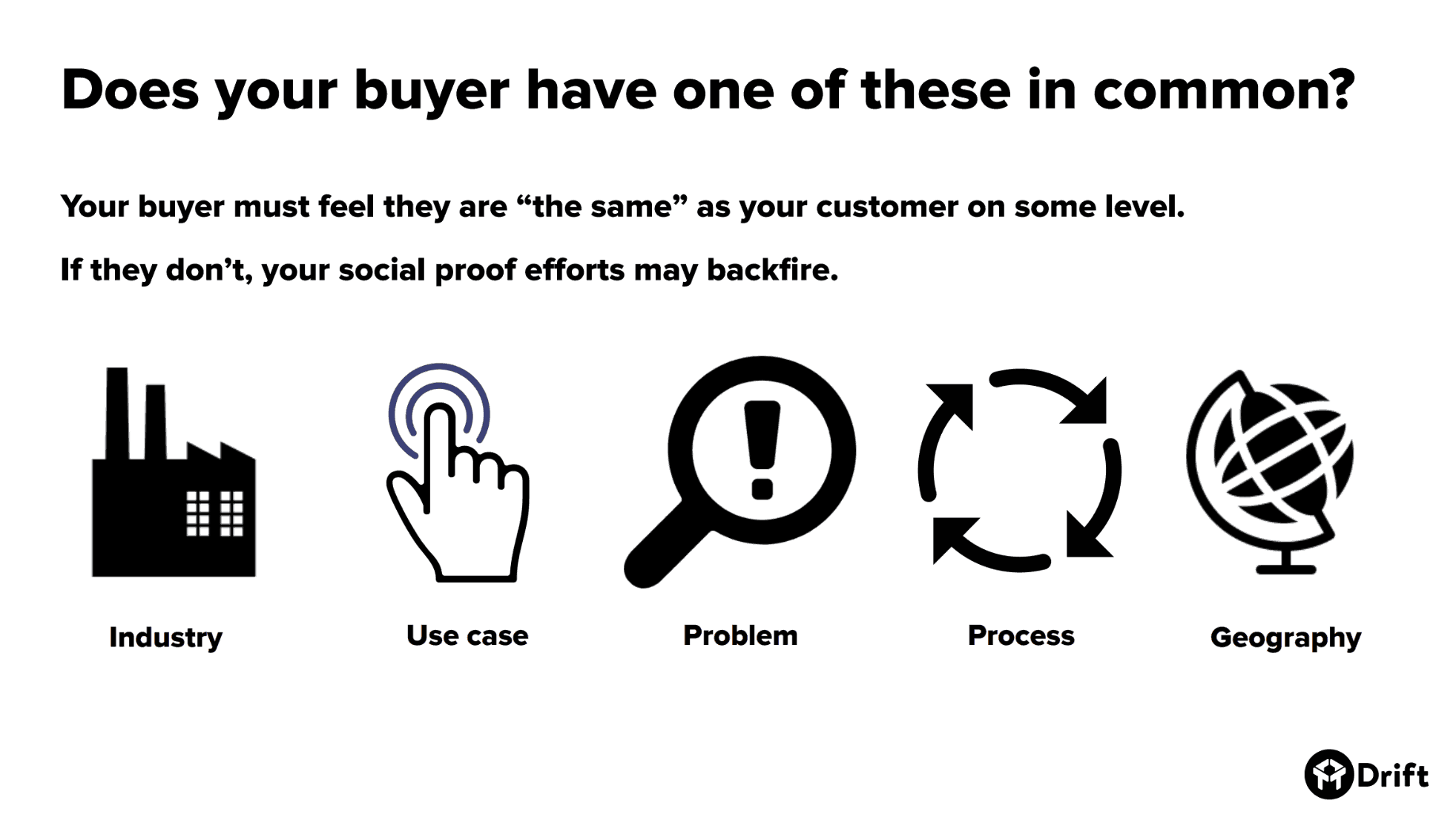
It’s not enough to get one or two examples. Get six or seven – industry, use case, problem, process, or geography are places to start. You need a critical mass of similar customers to give your prospects a feeling of FOMO, like they’re the ones late to the party.
Providing personalized customer stories is what’s going to close the deal in the next decade.
3. Go outside the traditional framework of channels and hours.
It’s an on-demand culture, and we’re all just selling in it.
That means if your prospects want to talk at night, you better be talking to them at night.
That means if your prospects are on Slack, you better be on Slack.
You have to use all the channels your prospects are using. It’s your job to know which channels to use when. That’s where conversational marketing comes in.
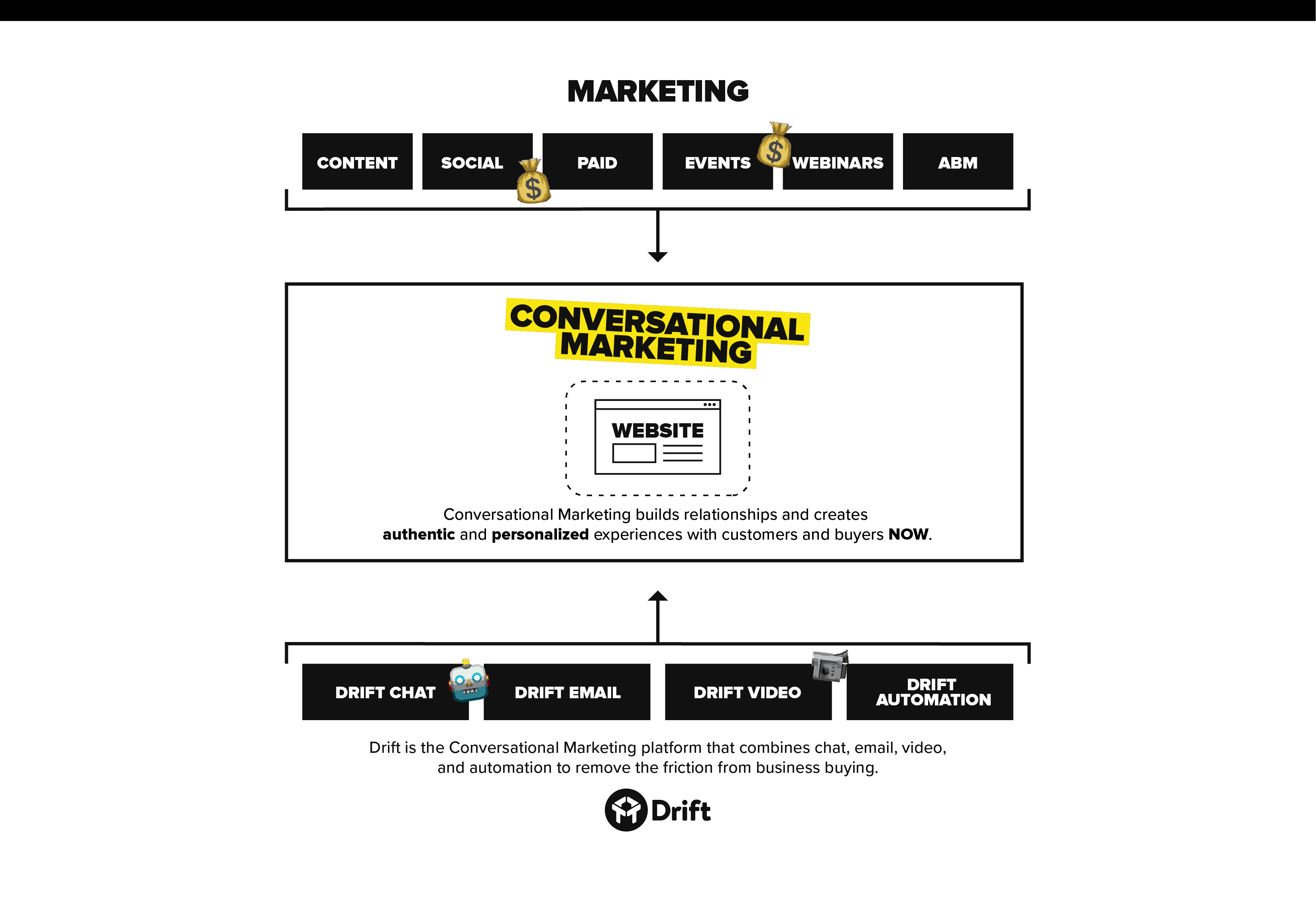
Conversational marketing is the fastest way to move buyers through your marketing and sales funnels through the power of real-time conversations. It builds relationships and creates authentic and personalized experiences with customers and buyers now.
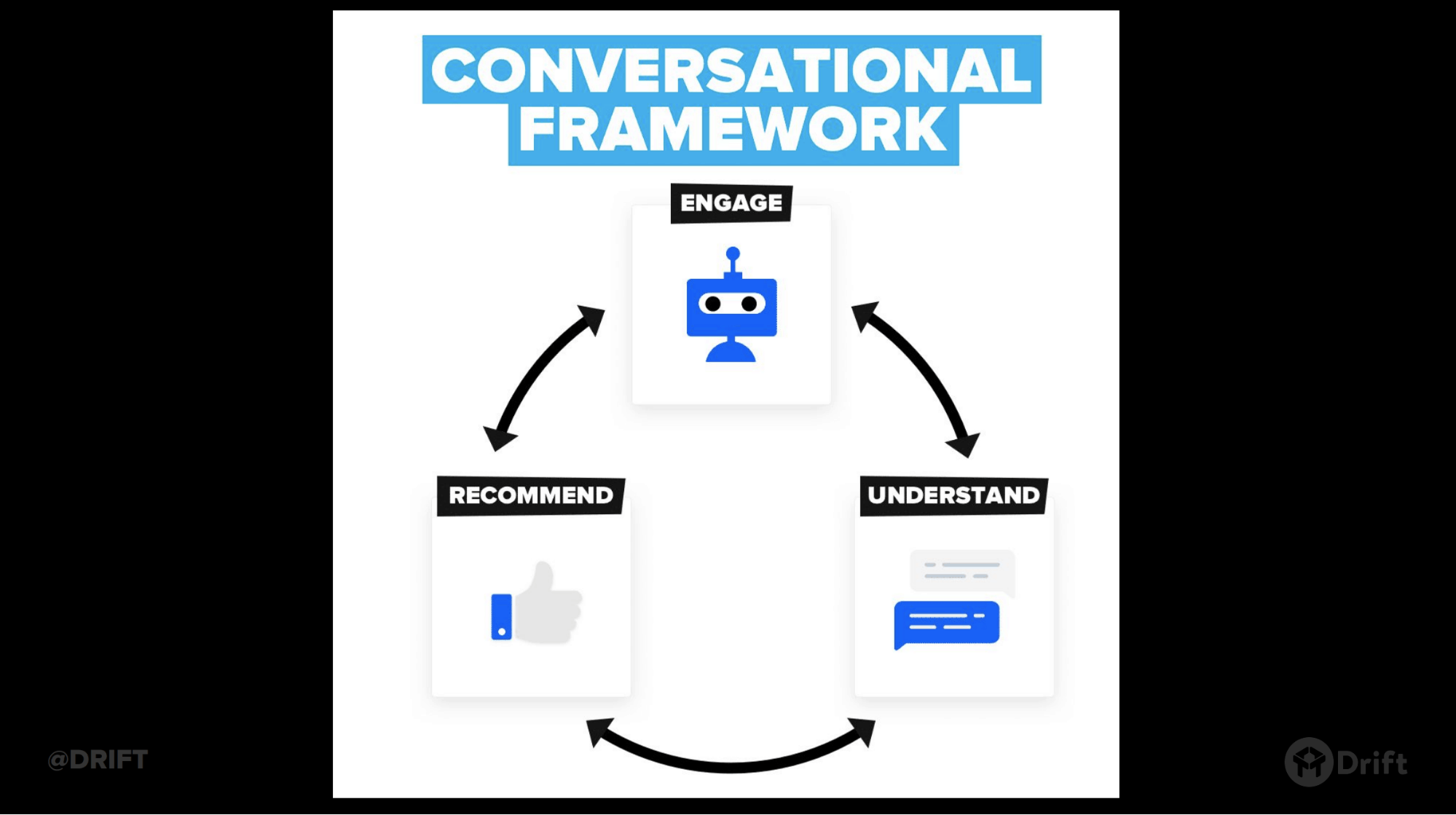
And you can use conversational marketing at every stage of the funnel, in every channel:
Social Media
Social helps you deliver a bigger message about your product to a wide audience, but you can also use it to build social proof by engaging with your current customers.
The point of email is to get your prospect on the phone. And the best way to do that is to let go of the corporate buttoned-up version of yourself by writing the way you talk so it feels like a friend sent it. Check the pro tips out below 👇
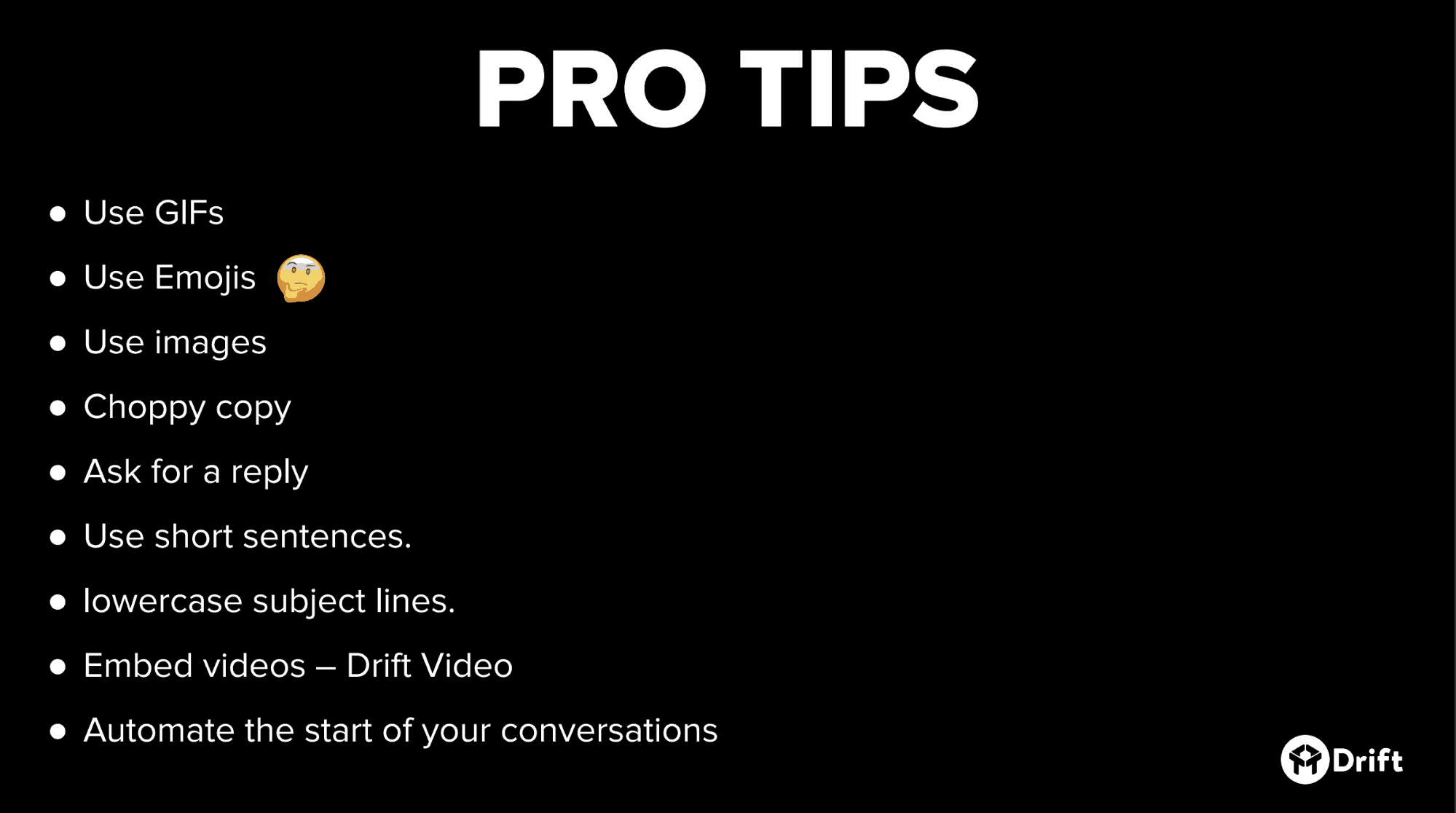
Texting
Close the deal with a text. It’s the deepest relationship you can have with a prospect, so don’t try this with cold outreach – reserve it for prospects ready to close. Our sales rep Nick hit 100% of his quota by Q3, and that’s his best-kept secret (well…not anymore):
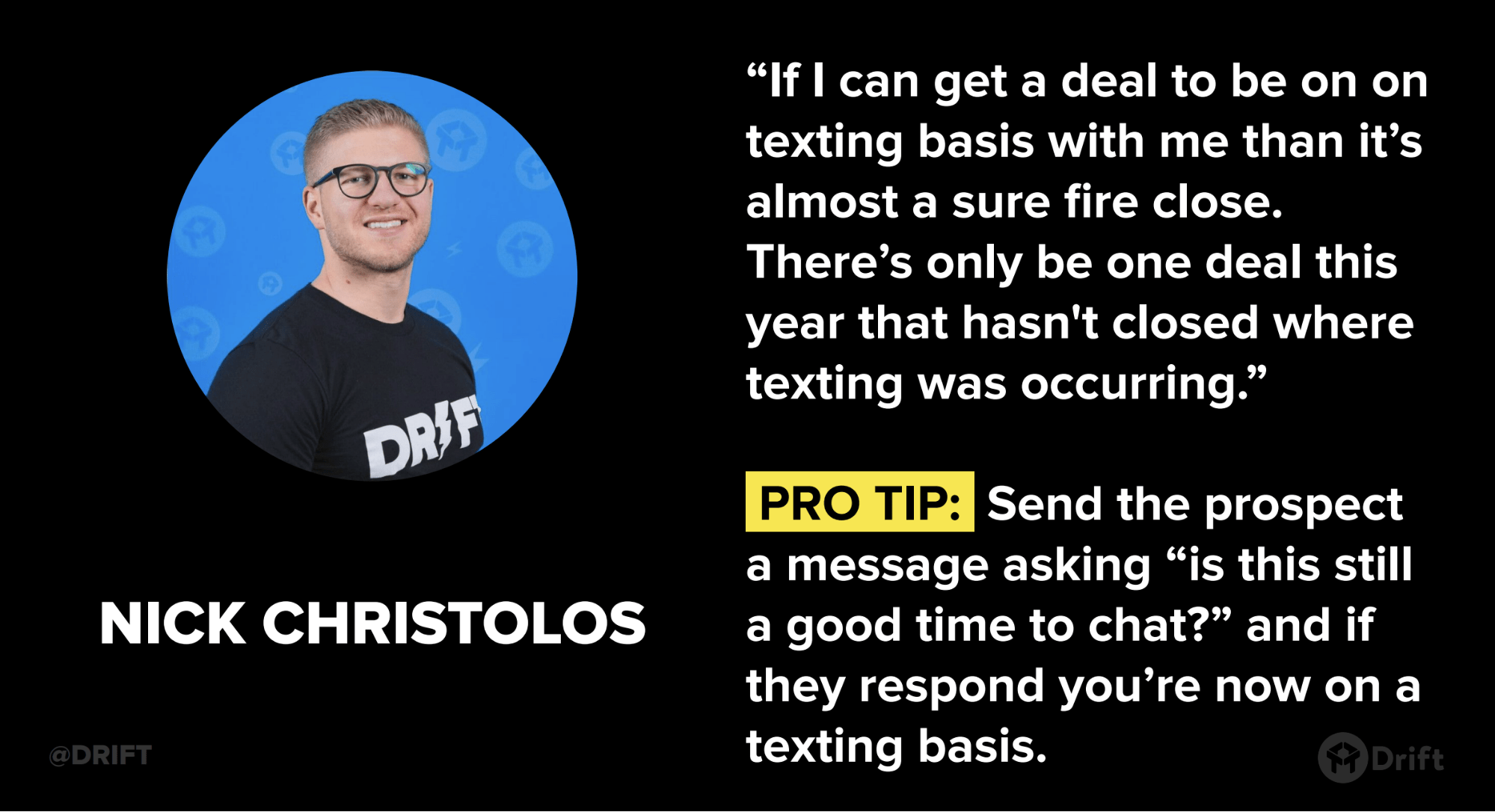
Account-based
Build word-of-mouth and customer retention with creative personal touches. For example, an SDR at Gong sent a customer a gladiator helmet in the mail after a funny social media post, and the customer got a huge kick out of it – opening the door for a great customer relationship.
Video
Use video to engage your prospects and pique their interests enough that they want to learn more. Personalize it to make sure your message gets across. Here’s a blitz of stats you should know if you’re not doing video already:
- Adding video to an email can increase click-through rates by up to 50% (Campaign Monitor)
- 4 times as many consumers would rather watch a video about a product than read about it (Animoto)
- 65% of executives have visited a vendor’s site after watching a video (Forbes)
- 75% of late-stage prospects that received personalized videos became closed deals (Salesloft)
We’ve been talking about video in marketing for years, but it’s still the Next Big Thing because it’s not commonly used – and it’s super effective. If you haven’t thought about video in 2020 and beyond, you should. (Oh, and have I mentioned you can use Drift for that? Get the details on that here).






